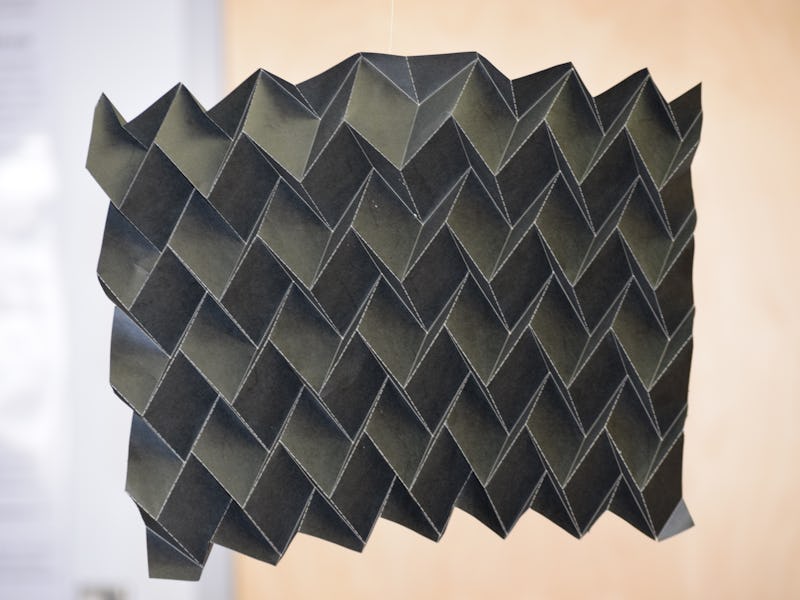If you’ve ever done origami, you might have created a paper crane or 3D heart. Now, inspired by the Japanese art, NASA is developing an origami radiator for satellites.
This “smart” radiator that can remove or retain heat on satellites. It can be easily folded up, thanks to its V-groove origami structure. This is helpful because when the satellite is launching, the radiator can fold to a small size, and then expand once it’s in space.
Plus, like Transformers, this radiator can shape-shift. While it does not become a giant alien robot, it can fold itself to control the rate of heat loss by using temperature-sensitive materials like muscle wire. As the radiator senses a change in temperature, the radiator can shape-shift to conserve or shed heat. The deeper it folds, the more heat it absorbs.
“If you look at origami surfaces, they’re comprised of angular cavities, V-groove shape like cavities,” Brian Iverson, Brigham Young University assistant professor in mechanical engineering, tells Inverse. “The aspect ratios affect how a surface absorbs or emits heat. If you have a deep cavity with a small opening, the cavity is absorptive.”
Iverson, along with Brigham Young University mechanical engineering professor Matthew Jones and doctoral student Rydge Mulford, designed the radiator, while Vivek Dwivedi, a technologist at NASA’s Goddard Space Flight Center in Greenbelt, Maryland, is developing a coating to help the radiator conserve and shed heat. This coating may also be used on other spacecraft parts, like solar-array panels.
This radiator is ideal for CubeSats, a cheap, tiny spacecraft that’s about the size of a shoebox. Right now, radiators are flat and heavy, and this doesn’t work well with miniature satellites like CubeSats.
Its major advantage is the ability to change the amount of heat rejected and absorbed in real time. Current satellite radiators are unable to change their heat transfer characteristics, meaning that they often reject too much heat. Also, it is possible that this radiator could save weight although the final design is not yet finished. Also, the radiator can be constructed from any material and coated with any coating, giving it a wide variety of radiative properties.
This isn’t the first time NASA used origami as inspiration for its inventions. In 2014, researchers from NASA and Brigham Young University collaborated to create an elegant solar panel array that folds up like a flower. Like the smart radiator, these solar panels can also be used on tiny satellites like CubeSats.
In 2014, NASA and Brigham Young University researchers teamed up to make an origami solar panel that can be folded up used on small satellites.
In 2015, NASA also created shape-shifting airplane wings that have bendable and twistable surfaces. Since these wings can morph during flight, airplanes can fly more quietly and in a more fuel-efficient way.
Scientists in other fields also apply origami to their innovations. Chinese researchers created a shape memory polymer, or a material that can shape-shift and fold itself into an origami crane. In the health field, Japanese scientists created a robot pill that can unfold inside your body and administer medicine. And this likely won’t be the last we see of origami space technology. In the future, designers may create origami habitats for us to live in if we move to outer space.
